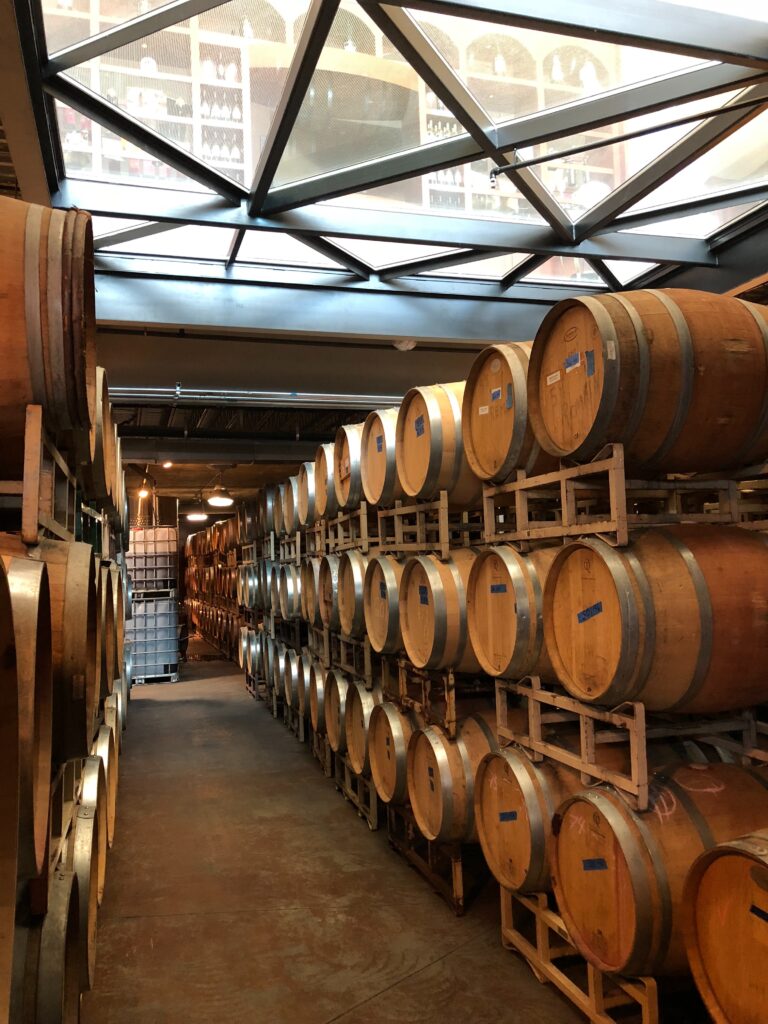The proliferation of artisan distilleries across the United States has resulted in distinct regional trends in alcoholic beverages. Although it is too soon to determine a single, defining quality—particularly concerning the many regional whisky expressions—many distilleries’ products have a specific genetic makeup.

Distilleries in the Pacific Northwest share several characteristics, including an emphasis on using locally farmed grains (particularly historic types) and other regional components (such as peat and barrels constructed from the indigenous Garry Oak) in their products (Quercus garryana).
American Single Malt Whisky Association President Steve Hawley claims that the area’s long history as a center for craft brewing has encouraged a spirit of innovation and the development of novel mash bills and maturation techniques. As Hawley points out, that is why the Pacific Northwest has long been a hub for making American malt whisky.
The Distillery Trail website is run by the Washington Distillers Guild, which has 65 members and provides directions to each distillery and information on area attractions. Half of the distilleries are located inside the Seattle metro region, while the other half are within a 75-mile radius of the city. So, if you want to visit any of Washington’s many distilleries, Seattle is a great starting point. For a complete guide to Seattle’s many attractions, check out VisitSeattle.
Roughly 30 whisky distilleries may be found throughout Washington state. The most fascinating are briefly summarised here.
Woodinville Whisky Company, located on the outskirts of Seattle, is a landmark of American whisky. The distillery was founded in 2010 by partners Orlin Sorensen and Brett Carlile. They were taught by the late Maker’s Mark Master Distiller David Pickerell. Nearly a hundred vineyards call Woodinville, Washington, home.
All grain is farmed on the Omlin Family Farm, located in Quincy, not Woodinville, where the company’s headquarters are.
Woodinville’s primary offerings are their straight Bourbon, rye, and port-finished bourbon whiskys. The alcohol content of all three whiskys is 90 proof.
In terms of straight bourbons, I like the one aged in port. Woodinville’s 5-year-old Bourbon gets a final six-month finish in a Ruby Port barrel. The lingering aftertaste is thick with candied cherry, dried dark fruit, and milk chocolate tastes.
In addition, they make their own Cask Strength Straight Bourbon, which is only available at the distillery. If you believe Orlin Sorensen, the distillery releases a brand-new cask-finished expression every year. Oloroso, PX, and Moscatel Setubal finishes have been used in previous bottlings. In November, a new face of 100 percent rye whisky will be released.
Located on Seattle’s Bainbridge Island, Bainbridge Organic Distillers may be reached via ferry in just over half an hour.
This distillery, established in 2009 by Keith Barnes, is his brainchild. It was one of the first distilleries in Washington to age its whisky in Mizunara barrels.
It was also the first to age its whisky for an average of 8-10 months in barrels containing “island-produced” spirits. The position on Puget Sound, where the salty sea air coats the maturing barrels, gives the distillery’s whiskys a distinctive flavor and scent.
Whiskys such as Two Islands Islay Cask Whisky, Two Islands Hokkaido Mizunara Cask Whisky, and Two Islands Barbados Rum Cask Whisky are made by the firm.
Barnes claims that “two Island barrel finishes,” including a Madeira cask and a Stout cask, are now in production. A limited-edition whisky made from just rye grains is also on the way.
It was in 2010 when Matt Hofmann and Emerson Lamb established Westland Distillery, an urban distillery. Those driving north on I-5 into Seattle may recognize the former Rainer Brewery, located only a few blocks to the west. This distillery was one of the first to produce single malt in the United States.
Because “Washington state includes two of the top barley growing regions in the world,” the creators of Westland think that the Pacific Northwest is perfect for making single malt whisky.
In addition to its trademark Single Malt American Whisky, the distillery also produces many limited editions, including Colere (Edition 2), Garryana (Edition 6), and some peated and unusual bottlings.
Barley types were explicitly chosen for their taste profiles, and the Colere series delves into some variations. The Talisman barley used in Edition 2 was grown for Westland near Skagit Valley.
In terms of protein content, Talisman is a two-row winter barley. The cultivar was developed in Denmark, but it is now commonly used to brew classic British ales.
A classic representation of authentic Northwest terroir, the Garryana Edition 6 is a must-try. The species of oak known as garryana is named Quercus garryana. Native to the Pacific Northwest, from western British Columbia to northern California, it is a particular species of white oak.
According to Westland’s Master Distiller Matt Hofmann:
The typical American oak barrel imparts flavors of caramel, coconut, vanilla, and general baking spices. All of those ideas are given a sinister spin by Garry oak. Use molasses and cloves instead of traditional baking spices in place of caramel. The phenolic note is not vanilla but rather barbeque sauce and smoke.
Close by the famous Pike Place Market is the urban distillery Copperworks Distilling Company.
Established in 2013, the distillery was established by Jason Parker and Micah Nutt, two veterans of the craft beer industry. It was named Distillery of the Year by the American Distilling Institute in 2018.
Malted barley is used in the production of all of its alcoholic beverages.
In addition to their American Single Malt Whisky, Copperworks now makes a Peated Cask of American Single Malt Whisky. Each batch combines six to eight barrels and has a mash bill based on a particular type of barley and a distinct maturation method.
The most recent release of our Single Malt Whisky, #45, is made from a barley varietal known as Fritz. Ninety-four percent of the whisky was aged by Copperworks for thirty-six months in charred American oak barrels. Manzanilla Sherry was used for the remaining 60 months.